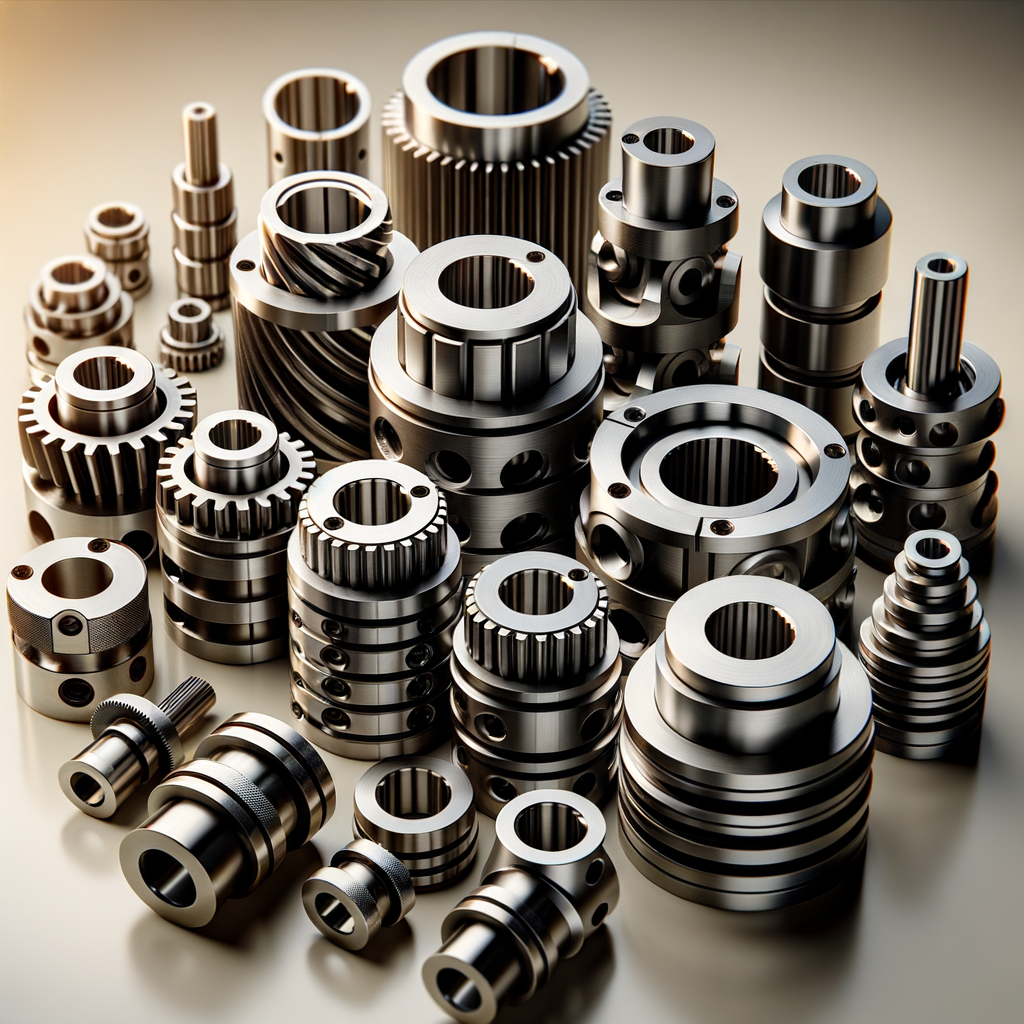Shaft collars are mechanical devices used to hold components onto a shaft or to locate components in a specific axial position. They are typically cylindrical in shape and come in various designs to cater to different requirements. Despite their modest appearance, shaft collars are indispensable in ensuring the proper functioning of machinery across diverse industries.
Types of Shaft Collars
Shaft collars come in a variety of designs, each tailored to specific applications. Common types include set screw collars, clamp-style collars, one-piece collars, and two-piece split collars. The choice of collar depends on factors such as load capacity, ease of installation, and environmental conditions.
Functions and Applications
The primary functions of shaft collars include securing components, axial positioning, limiting motion, and supporting bearings. From conveyor systems to robotics, shaft collars find applications in a wide range of industries where precision and reliability are paramount.
Advantages of Shaft Collars
One of the key advantages of shaft collars is their versatility. They can be easily adjusted and repositioned, making them suitable for dynamic applications. Moreover, their simple design translates to easy installation, resulting in time and cost savings for manufacturers. Additionally, shaft collars are known for their durability, ensuring long-term performance even in harsh operating conditions.
Considerations for Choosing Shaft Collars
When selecting shaft collars, several factors must be taken into account, including material, size, load capacity, and environmental factors. Choosing the right collar ensures optimal performance and longevity of machinery components.
Installation Process
Proper installation of shaft collars is crucial for their effectiveness. This involves proper preparation, correct positioning on the shaft, and secure tightening using the appropriate mechanism. Following manufacturer guidelines and best practices is essential to prevent issues such as slippage and misalignment.
Maintenance Tips
Regular maintenance is key to maximizing the lifespan of shaft collars. This includes periodic inspection, lubrication of moving parts, and timely replacement when signs of wear or damage are detected. By staying proactive, operators can avoid costly downtime and ensure continuous operation.
Common Issues and Solutions
Despite their reliability, shaft collars may encounter issues such as slipping, corrosion, or misalignment over time. Proper troubleshooting techniques, such as adjusting tightness or replacing worn components, can help resolve these issues effectively.
Case Studies
Real-world examples highlight the importance of shaft collars in various industrial settings. From enhancing efficiency to minimizing downtime, these case studies demonstrate the tangible benefits of using high-quality shaft collars in machinery.
Future Trends in Shaft Collar Technology
As technology advances, so do shaft collar designs. Innovations such as smart collars equipped with sensors for condition monitoring and predictive maintenance are poised to revolutionize the industry, offering unprecedented levels of efficiency and reliability.
Environmental Impact and Sustainability
In an era of increased environmental awareness, sustainability considerations are becoming increasingly important in manufacturing processes. Shaft collar manufacturers are exploring eco-friendly materials and implementing recycling initiatives to reduce their environmental footprint.
Comparative Analysis with Alternative Solutions
While shaft collars offer numerous advantages, it’s essential to compare them with alternative solutions such as bearings, couplings, and bushings to determine the best fit for specific applications. Each solution has its strengths and limitations, and a thorough analysis is necessary to make an informed decision.
Industry Regulations and Standards
Adherence to industry regulations and standards is paramount to ensure safety and compliance. Manufacturers must stay updated on regulatory requirements and implement appropriate measures to meet or exceed these standards.
Educational Resources and Training
Education plays a crucial role in promoting the proper use and maintenance of shaft collars. Workshops, online courses, and comprehensive manuals provide valuable resources for operators and maintenance personnel, empowering them to optimize the performance of machinery.
Conclusion
In conclusion, shaft collars may be small in size, but their impact on machinery efficiency and reliability is significant. From securing components to facilitating precise axial positioning, shaft collars play a vital role in various industrial applications. By understanding their importance, selecting the right type, and following best practices for installation and maintenance, manufacturers can unlock efficiency and prolong the lifespan of their machinery.

